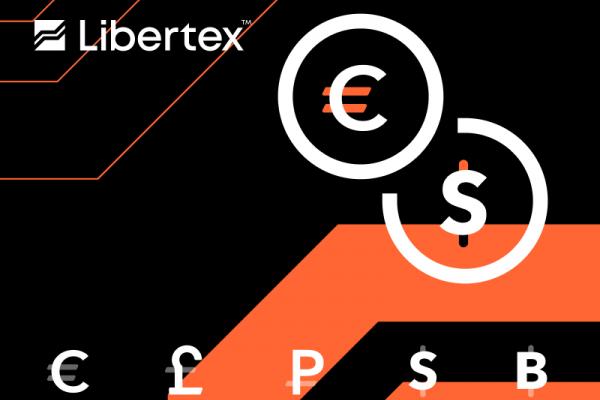It’s a well-known fact that the forex market is one of the biggest financial markets in the world, boasting a value of around $2.4 quadrillion and a turnover of about $6.6 trillion every single day. However, the lifeblood of this marketplace is international trade, and the disastrous effects of the coronavirus pandemic and associated inflation on supply chains and global economic activity have had a serious impact on foreign exchange trading. Meanwhile, regulators and financial policymakers have been forced to perform a delicate monetary balancing act to keep the unfortunate combination of rising public debt, runaway inflation and uncertain business outlook in check.
While the central bank liquidity drip and government stimulus have been a veritable boon for the stock markets, traditional currencies have been driven down by swelling balance sheets and low interest rates around the world. Against this backdrop, commodities currencies like the Australian and Canadian dollars have lost significant ground against their US counterpart, which is generally seen as the world’s reserve currency and a solid hedge in times of high volatility on the currencies market. This is unsurprising given the risk-averse profile of many forex traders; a clear trend towards safe currencies is emerging among individual and institutional investors alike.
A fistful of dollars
As we already touched upon, the big winner in the traditional currencies’ space this year has been the US dollar. Forex traders have flocked to the greenback as a hedge against the ongoing pandemic uncertainty, high inflation and ultra-dovish monetary policy of other major regulators such as the ECB and the Bank of England. While the Fed has refrained from raising interest rates, it has been very vocal about the need for a transition towards fiscal tightening and has taken active steps towards tapering its economic stimulus package. Treasury bond yields have also been rising steadily, which naturally attracts foreign capital. What’s more, organic demand has also risen in countries suffering from hyperinflation, such as Argentina, Turkey and Venezuela, as locals seek to protect their wealth from depreciation. A combination of these factors has seen the USD gain more than 5% on the CAD in the second half of 2021. Meanwhile, the dollar’s gains against the EUR and GBP over this same period have been even more impressive, averaging around 7.5%.
Bargains there for the taking
While US Treasury yields may well have depressed the bulk of developing world currencies, some were probably punished a bit too harshly, providing too much of a temptation for those with a slightly higher appetite for risk. Indeed, Barclays Plc has advised its clients to consider the Brazilian real, Russian rouble, Mexican peso and South Korean won as long-term investments. Discovery Capital, on the other hand, favours minor European currencies such as the Hungarian forint, Czech koruna and Polish złoty against the euro. The logic here is clear: these countries’ central banks have already enacted interest rate hikes, while the ECB has told markets not to expect any in the euro area until 2023. Other developing market currencies with strong growth prospects include the South African rand and Indonesian rupiah. More adventurous investors could include these as a weighting in a larger basket of European minors and majors.
New money
With all this talk about traditional currencies, it’s easy to overlook the novel form of money that has made more millionaires in the past 5 years than any other asset class in history. Out of all currencies, crypto has undoubtedly been the biggest gainer across the board in 2021…but it isn’t for the faint of heart.
When it comes to digital currencies, everyone likes to focus on Bitcoin and Ethereum. These once derided instruments have now become a staple of many institutional portfolios and are close to shedding their reputation as a volatility trap. Indeed, despite some ups and downs this year, they are now up 77% and 492% YTD, respectively.
However, the more risk-tolerant would do well to look at some of the newer altcoins that have taken the market by storm. The meme cryptocurrency Dogecoin would be one prime example. Amid vocal support by Tesla founder Elon Musk, this crypto has proven to be an interesting asset for investors and traders, bringing them a 3,400% YTD gain, despite recently losing nearly 70% of its value in H2. Another pup spawned off the hype of DOGE, Shiba Inu, has posted even more impressive gains of 55,299,173.2% since launching in May of this year.
Of course, there is huge risk involved in these kinds of investments, but the wise trader or investor would conduct their own research before taking any further steps.
Trade currencies with Libertex in 2022
With Libertex, you can trade CFDs on both digital and traditional currencies — along with stocks, commodities and even options on CFDs — all from the comfort of one multi-award-winning app. Visit our Forex section to explore CFDs for all the majors like EUR/USD, USD/CAD and AUD/USD. You’ll also find CFDs for a range of exotic cross rates, including EUR/RUB, EUR/MXN and many others. Then, if you’re ready to take the crypto CFD plunge, you might want to consider CFDs for legacy coins BTC and ETH, or even the new top dogs, DOGE and SHIB. Create a Libertex account if you haven’t already, and make 2022 a year to remember!


